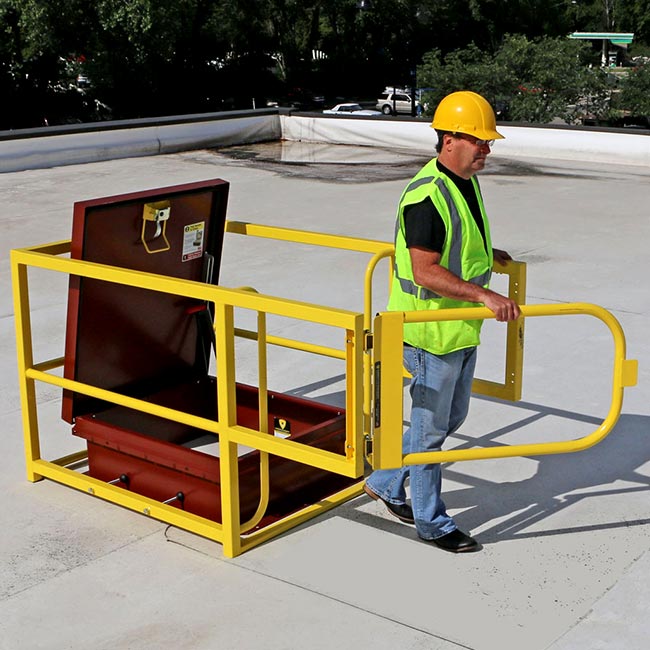
How safe is your hatch?
The most common way of accessing a roof is through a roof hatch. You make your way up a fixed ladder, open up the latch, and begin climbing out. Before you know it you can be exposed to not one, but multiple fall hazards.
Protect Your Hatch With Railing
For one, the hatch itself is a potential fall hazard. Depending on where your roof hatch is located, you could be standing next to another fall hazard, the edge of the roof. Add in awkward twisting and climbing required to exit a hatch, protection is a necessity on all hatches.
There are a few reasons why it is so important to protect your roof hatch with guardrails. First and foremost is because they are typically found on the edge of the roof.
Get Away From The Edge
Roofs are susceptible to high winds, slippery conditions, uneven terrain, even impaired visibility due to reflective surfaces. It would be ideal to not be a foot away from a deadly fall when first stepping out of your roof hatch.
A good hatch railing can negate all of these hazards. Hatch guardrails will give you a sturdy grab bar for stepping off your ladder. On top of that, if while approaching the hatch you were to trip, the guardrail will save from falling back inside the building, an equally painful descent.
If you are fortunate enough to have had an architect design your rooftop with the hatch somewhere in the middle of the roof, then you still need to protect it according to OSHA.
OSHA Has Final Word
According to OSHA 29 CFR 1910.28(b)(3), roof hatches are considered a hole in your roof. As long as the drop to the lower level exceeds 4’, you will need to protect it with some form of fall protection.
The easiest and most common way to protect a hatch is with a hatch safety railing. These bolt onto the outside frame of the hatch not creating any penetrations for potential leaks. Paired with a self-closing safety gate, your hatch, or hole in your roof, is considered safe per OSHA.
Watch Your Head!
Maneuvering in and out of hatches can be awkward. The combination of climbing a ladder, opening the latch, liftings the door over your head, then shimming out can be taxing on an individual. Now do it with a full set of tools or equipment that needs to be brought to the roof.
That said, anything you can do to create a more stable and functional area for accessing your roof will bring peace to those regularly using it.
It is important to protect your roof hatch because of the dangerous locations they are typically found, the code requirements of OSHA, and the ability to make a more functional work area for your employees. Putting up a simple hatch guardrail with a safety gate is an easy, quick, and inexpensive way to resolve all three of these issues.
I'm Prfoessional Digital Marketer
Post new comment
Please Register or Login to post new comment.